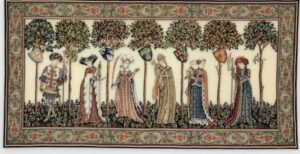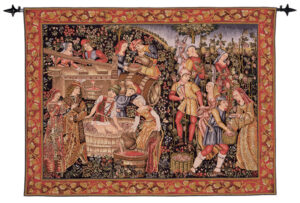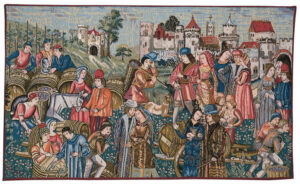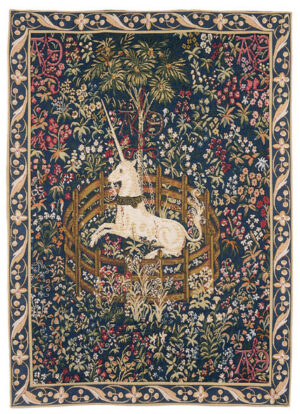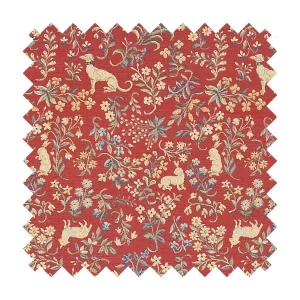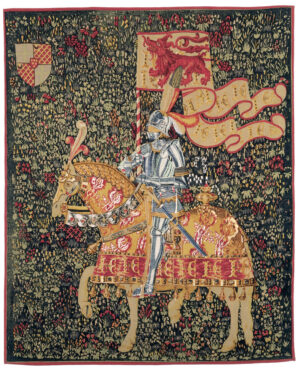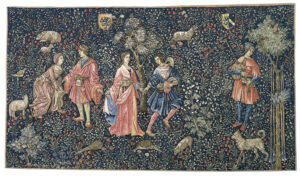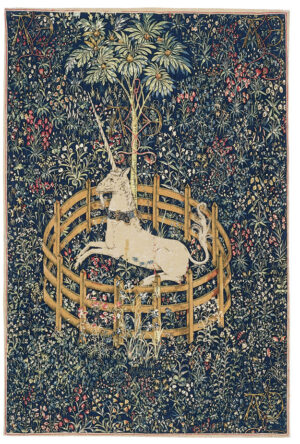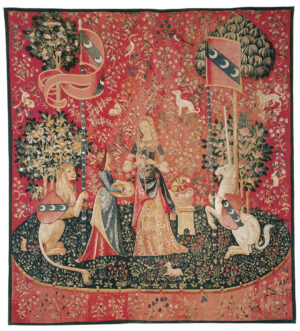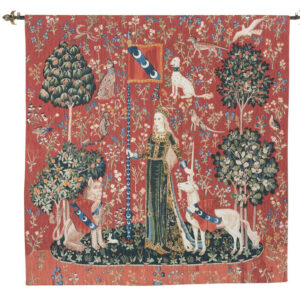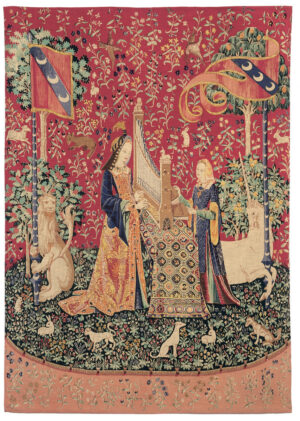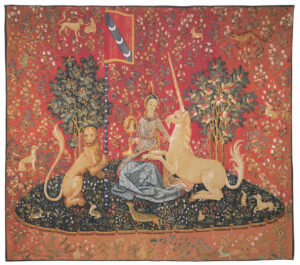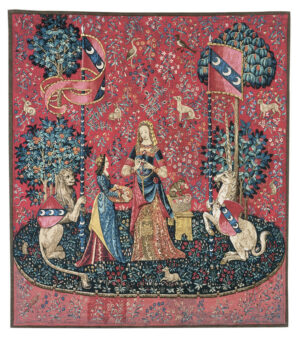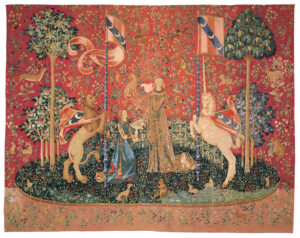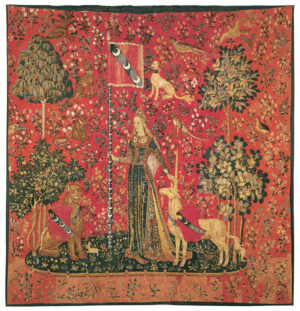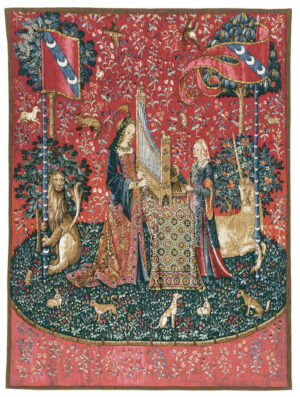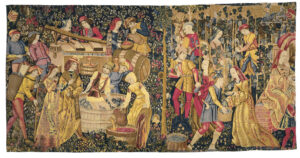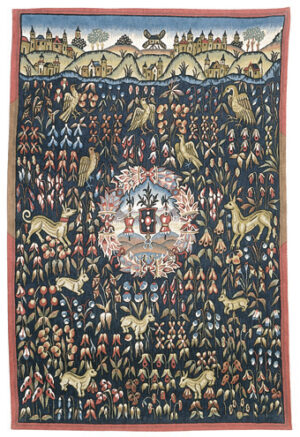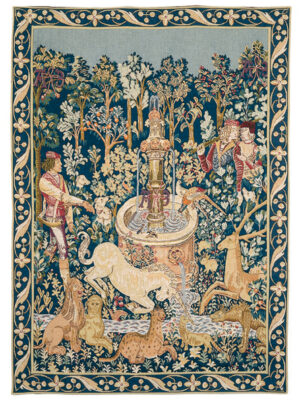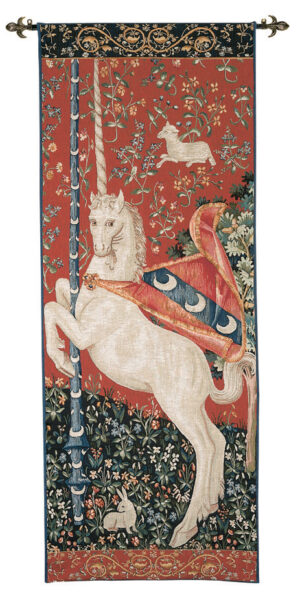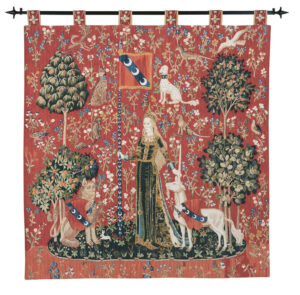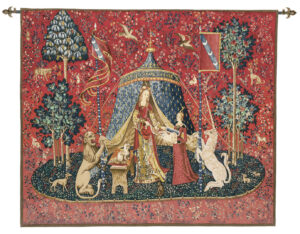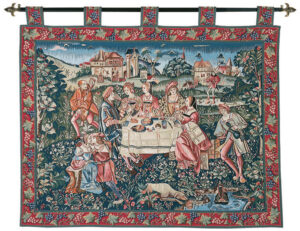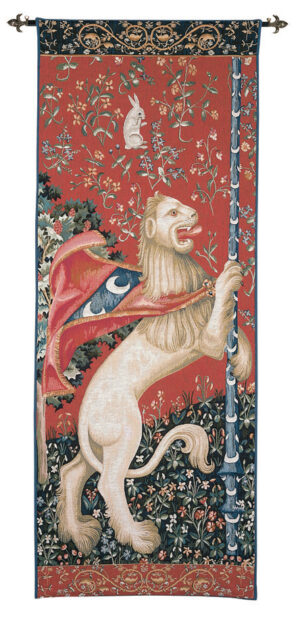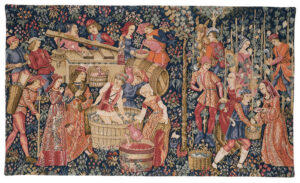In the 15th Century, tapestries usually depicted a theme and often illustrated scenes from everyday life. The distinctive ‘Mille-Fleurs’ (‘thousand flowers’) style which originated during this period, is thought to be inspired from the custom of strewing cut flowers on fête days in Medieval times. Perhaps the finest surviving examples are the series of ‘The Lady with the Unicorn’ tapestries, which were woven circa 1490.
During this period, tapestries with a ‘mille-fleurs’ background, often with birds and animals, originated mainly from the Loire Valley region of France.
Due to the nature of tapestry fabric, nobility and scholars throughout history have collected and preserved these works of art. Now you can see these works of art in palaces and museums throughout the world. Or you can own a piece of history and culture to savour and preserve for yourself. Here are most of history’s finest tapestries reproduced for you. Each tapestry comes in different sizes as detailed in the enlargements. These works of art are the finest made in the world.
Each tapestry comes in different sizes as detailed in the enlargements. Dimensions are quoted as Height x Width. Sizes given in this site are approximate, but are stated as accurately as possible.
We hope you enjoy them as much as we do.
Fleur de Lys Tapestries is now offering a specially designed tapestry hanging rod with each tapestry sold. Please contact us for details or to organise an obligation free viewing.

